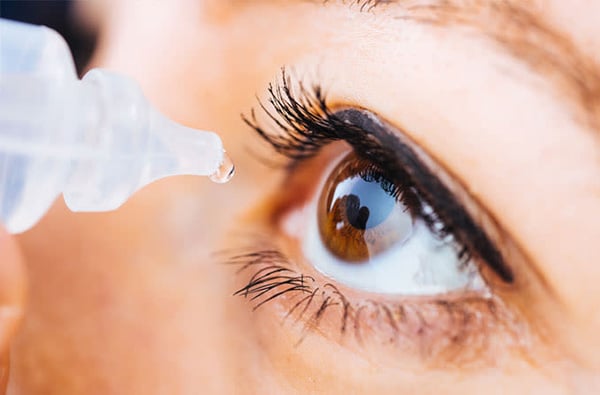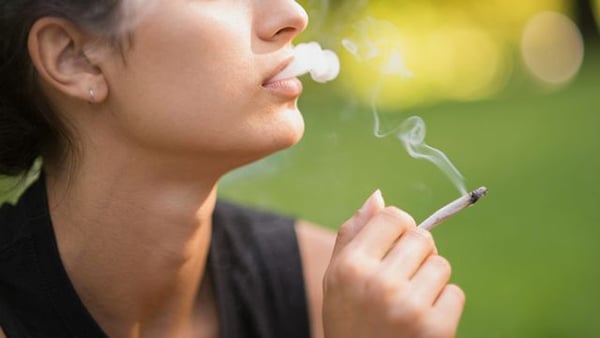Rebound Hyperemia: What is it and how to avoid it?
Rebound Hyperemia: What is it and how to avoid it?

Red eyes are a common side effect of marijuana and can be a telltale sign of recent drug use.
Consumers wishing to be discreet about cannabis use have often turned to eye drops, especially ones that reduce redness.
But as more people use marijuana and these eye drops, so has the number of people reporting chronic redness increased.
The cause for the redness is not cannabis, but the treatment people have been using to cure this redness. The eye drops themselves are to blame, as overuse can cause a syndrome called "rebound hyperemia."
Hyperemia (or hyperemia) is an increase in blood flow to an organ or area of the body that is not inherently problematic.
A typical example of hyperemia happens during or after exercise when blood vessels widen to carry more oxygen around the body. Another common example is inflammation around muscles or joints. But other types of hyperemia can be caused by drugs, including marijuana.
This article reviews why marijuana consumers experience rebound congestion, why marijuana makes our eyes turn red in the first place, and how to minimize the risk of rebound hyperemia while treating red eyes.
Rebound congestion and marijuana

Marijuana use can cause red eye because the active ingredients, including THC, act as vasodilators, relaxing and dilating blood vessels.
The word comes from vast, from the Latin for "vessel"; and dilate, meaning to widen or open further.
These dilated blood vessels become clearly visible in the whites of our eyes.
This redness of the eyes is a normal physiological response to some of the cannabinoids in cannabis and can be caused by any method of consumption (smoking, vaping, or ingestion). That said, smoke in or around the eye can also dry out the eye and cause additional redness, but this irritation is easier to treat and is different from hyperemia.
Eye drops can relieve redness in several different ways, mainly by hydrating and lubricating the eyes. But redness relief drops specifically contain active ingredients called vasoconstrictors. Vasoconstrictors do the opposite of vasodilators. They are a class of medication that constrict the blood vessels. This reduces their size and thus makes them less noticeable.
Reducing blood flow also reduces the amount of oxygen going to your eyes. In response, the eye may feel starved of blood, and after the drug wears off, these vessels dilate again in an attempt to correct the blood flow. This is called the rebound effect, which causes chronic redness in the eyes, causing many consumers to fall into a permanent treatment cycle.
How to treat and resolve rebound congestion
If you experience rebound congestion the first step is to stop using redness-reducing drops such as Visine Redness Relief, Clear Eyes Max Redness Relief, Murine, and Opcon.
Look on the ingredients list and avoid drops with tetrahydrozoline and naphthomethazoline/naphazoline. If your drops contain any of these ingredients, place them back in the medicine cabinet for a moment before considering other types of drops.
There are three main categories of eye drops: anti-redness, anti-sensitization, and artificial tears.
As we have seen, drops that relieve redness contain vasoconstrictors that provide rapid relief but carry the risk of dependence. Allergy relief drops contain antihistamines that reduce allergy symptoms such as itchy, watery eyes. Artificial tears are sterile lubricants containing electrolytes that help protect eye health. All of these drops also contain necessary preservatives that may irritate the eyes, so trial and error may be required.
OTC Artificial tears should be standard eye drops for any eye irritation.
Dust, pollen, dryness, smoke, or other irritants are the most common causes of redness, which can usually be relieved simply by rinsing the affected eye with a hydrating solution to flush out the offending irritation. Artificial tears do not constrict blood vessels dilated by marijuana but can reduce redness due to related causes such as smoke or dryness.
Some people find placing a cold compress or towel over their eyes
can relieve symptoms. The idea is similar to putting an ice pack on a swollen muscle. Ice is too cold to use on your eyes safely, but a cold compress can reduce swelling in your blood vessels and temporarily relieve pain and discomfort.
If the red eye is caused by dryness then you can avoid smoking and switch to vaping which produces less dryness or try a CBD/THC tincture or edibles to prevent it. You may also find a humidifier to combat dry air that can help prevent red eye.
After a few days without vasoconstricting drops, symptoms of rebound hyperemia usually subside, but in rare extreme cases, it can take longer.
Conclusion
While purely a cosmetic issue (meaning there are no serious health risks associated with the condition), chronic red eye can carry the social stigma of drug use, fatigue, or other illness and can draw unwanted attention.
Fortunately, most cases of rebound hyperemia resolve themselves within a few days of not using vasoconstrictors.
That said, red eyes sometimes signal a more serious eye condition, such as glaucoma, dry eye, pink eye, or uveitis. Conditions such as lupus and Sjögren's syndrome can also cause redness of the eyes.
If the eyes do not return to normal after a week, or if other symptoms occur, including complete redness of the eye, redness in only one eye, swelling, pain, or vision changes, consult an optometrist immediately, as these can be signs of an infection or other condition.
Before using eye drops, try to figure out the cause of the problem. If you have frequent eye redness or redness that persists after you abstain from using vasocongestion eye drops, you should schedule an eye exam with your optometrist.
Q&A
How long does rebound hyperemia last?
In most cases, rebound congestion only lasts a few days after the use of contractile eye drops is stopped. Rare cases last longer but should still resolve themselves. If symptoms worsen or do not improve after a week, consult an optometrist so they can check the condition is not caused by something more serious.
How do you treat rebound redness?
Rebound redness can be treated by abstaining from using any vasoconstricting drops (usually tetrahydrozoline or naphthomethazoline). Blood vessels in the eye readjust without medication, so redness inevitably lasts for a few days, but this redness can be treated with OTC artificial tears and cold compresses to the eye.
What is an eye rebound?
Rebound or "rebound effect" is when blood vessels respond to drug-induced contraction by forcefully dilating in the absence of the drug. The same phenomenon is seen with nasal decongestants.
Why does Visine make my eyes redder?
Redness relief drops contain active ingredients called vasoconstrictors that shrink unsightly veins in the eye. However, restricting blood flow also means restricting oxygen and nutrients to the eyes. As a result, long-term or continuous use of these constricting drugs can force blood vessels to respond by dilating beyond their normal size when the drugs are not present, leading to chronic red eye and a cycle of treatment and response.
What are the specific active ingredients in redness relief drops that cause rebound hyperemia?
Tetrahydrozoline and naphthomethazoline/naphazoline.
Are there any long-term effects or risks associated with rebound hyperemia?
It can take several days (or sometimes longer) for this effect to gradually disappear.
What is the long-term risk of using vasoconstrictor eye drops?
These eye drops were designed to be used for a very short period of time. One or two days maximum. They are not meant to be used daily. The vessels can become permanently enlarged if these eye drops are used for a prolonged period.
